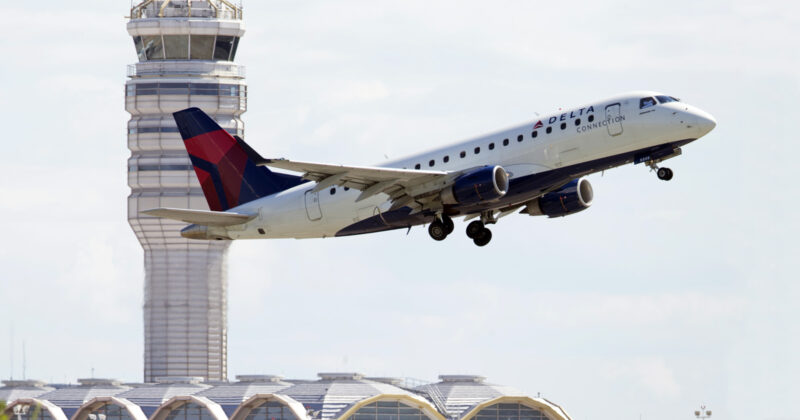The Federal Aviation Administration (FAA) is investigating after a Delta Air Lines plane nearly crashed midair with a T-38 Air Force jet Friday near Ronald Reagan Washington National Airport (DCA), just months after a January collision at the airport claimed 67 lives.
Delta Air Lines Flight 2983, an Airbus A319 headed to Minneapolis-St. Paul (MSP), departed its DCA gate at 2:55 p.m. local time and was cleared for takeoff around 3:15 p.m., the FAA and National Transportation Safety Board (NTSB) told Fox News Digital.
Meanwhile, four US Air Force T-38 Talons were inbound to Arlington National Cemetery for a flyover, according to the FAA and US Air Force.
The Delta aircraft received an “onboard alert” that another aircraft was nearby, and air traffic controllers issued corrective instructions to both aircraft, according to the FAA.
The NTSB said it was aware of “a loss of separation” between Delta flight 2983 and other aircraft, shortly after takeoff from DCA.
Delta officials said the flight crew followed instructions from the traffic alert and collision avoidance system (TCAS), as per training and procedures.
“Nothing is more important than the safety of our customers and people,” a Delta spokesperson told Fox News Digital.
“That’s why the flight crew followed procedures to maneuver the aircraft as instructed.”
Two pilots, three flight attendants and 131 passengers were onboard the Delta flight.
The FAA said it will investigate the incident.
“We are currently collecting information, but have not yet launched an investigation,” an NTSB spokesperson told Fox News Digital.


All aircraft need to be under a central control system, and on the same radio frequency, while in that airspace, for obvious reasons. Having military and civilian aircraft under different controllers in the same space is a recipe for disaster. TCAS needs to be operational in all aircraft traversing such congested traffic areas as well; and it needs to operate at low altitudes as well as higher up, since aircraft in that airspace are landing or taking off, thus operating at low altitudes.